Philip Chen FAIA LEED AP

President, Annum Architects (formerly Ann Beha Architects)
Degree(s):
Master of Architecture, Harvard Graduate School of Design; Bachelor of Environmental Design, Texas A&M University
Professional interests:
I’m a member of the Society of College and University Planning and a Director on the Board of the Boston Preservation Alliance, and I try to learn as much as I can from exceptional leaders and organizations.
Note: Chen is running for BSA Board Secretary in the 2022 BSA Election. You can also read our last Profile of his opponent, Katherine West Faulkner FAIA.
How did you explain to your parents what you do for a living?
My parents didn’t really know any architects other than I.M. Pei, but they knew architecture could be a hard profession. After wondering if I should have a back-up when I went to school, I think they’re now amazed by the way I made a career going into architecture and the places my work has taken me. Today, they’re most interested in talking about the places, cities, and countries I travel to for projects.
If you could give the you of 10 years ago advice, what would it be?
“Act like an owner.” I didn’t realize 10 years ago how much more there was to learn about the practice of architecture that you can’t get from working on projects and watching others run a firm. I found there are skills you learn or discover only when you take full ownership and accountability for the outcomes. Plus: “Watch out for Covid!”

Who or what deserves credit for your success?
When I’m asked how I balance work and life, I say that to me, it’s all life. I’m grateful to have a job I love, and my loving family makes it possible for me to do my job in a meaningful way.
Has your career taken you anywhere you didn’t expect?
My mother was born in the Philippines, and three years ago, I worked on a plan for the historic US Embassy in Manila, her home city, just blocks from where she went to school. One of the most rewarding and inspirational parts of my career has been experiencing the diversity of people and cultures in buildings and landscapes around the world.
Which one of your current projects excites you the most?
We’re in construction for a renovation and addition to the Graduate School of Education at the University of Pennsylvania, a school focused on teaching students in cities and preparing educators and leaders to transform the world, ranked the #1 Graduate School of Education by U.S. News & World Report, and my wife’s alma mater. I’m wholly invested in every one of our projects, but this one is especially personal!

What do you hope to contribute from your work?
I hope to leave our clients with a renovation, new building, or a transformed environment that helps them fulfill their missions and achieve their visions. And I hope to lead a process that inspires and elevates the owner, the users, the contractors, the design team, and everyone in our firm.
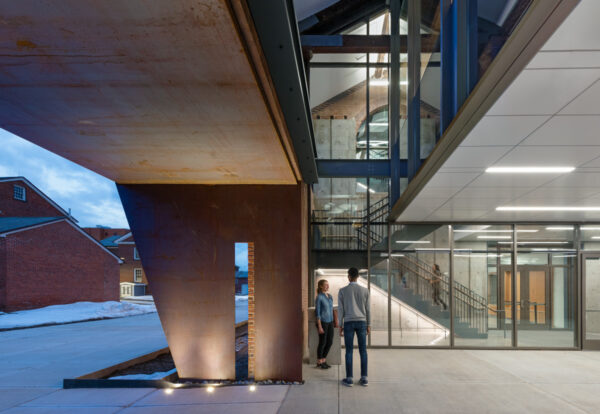
Annum's LEED Silver adaptive re-use project transforms a 19th C. warehouse into a Student Center at Springfield Technical Community College.
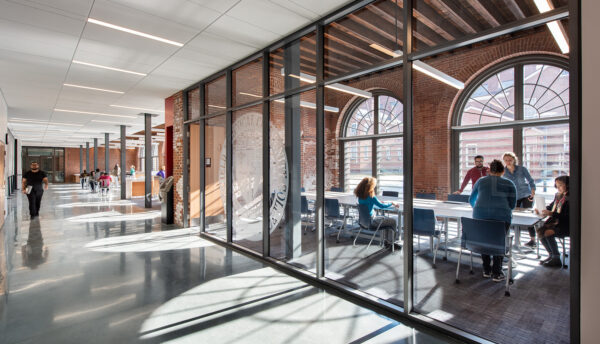
New student activity spaces highlight the historic character and provides generous views of the campus.
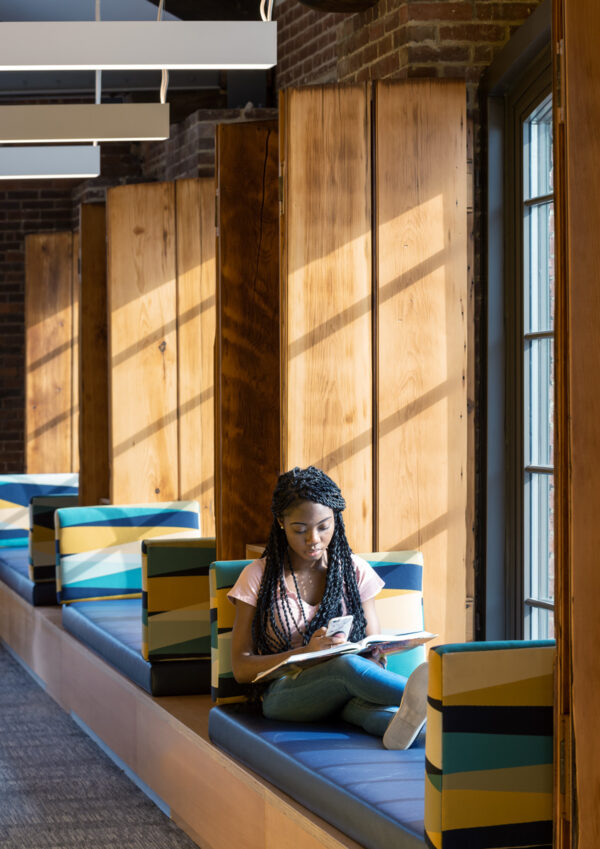
The armory’s original wood shutters were refurbished and repurposed to create window seats in the library reading room.
All photos: Chuck Choi
Tell us about your path to architecture and how it has impacted your career.
I worked at a large architectural firm during my senior year in high school and in the summer after graduation. Starting my path there, I learned early on how fun it was to work in a studio, and how engaging it was to be welcomed onto a team even when I was untrained and inexperienced.
I’ve always enjoyed the uniquely collaborative and synergistic aspect of this profession, and I believe that multiple viewpoints make planning and design conversations and outcomes more complex and richer. Having multiple and diverse perspectives and fostering deep engagement on our teams is something I strive for in all our projects and throughout our practice.
What is the most effective step you’ve taken in your work toward a more sustainable built environment?
In many campuses and cities where we work, much or most of the building fabric is already there. Our designs for revitalizing, adapting, and transforming existing and heritage buildings for energy efficiency, access, equity, and resiliency promote good stewardship and a sustainable built environment, but they also show that preservation can be combined with progress and innovation.
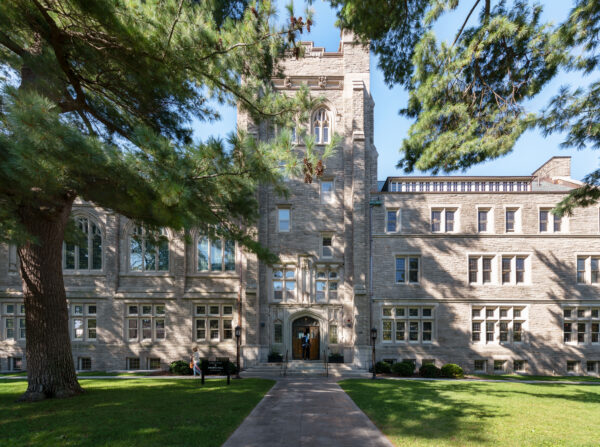
Completed in 1911, Swartz Hall is Harvard University’s only major Collegiate Gothic building and the center of administrative and student life at Harvard Divinity School.
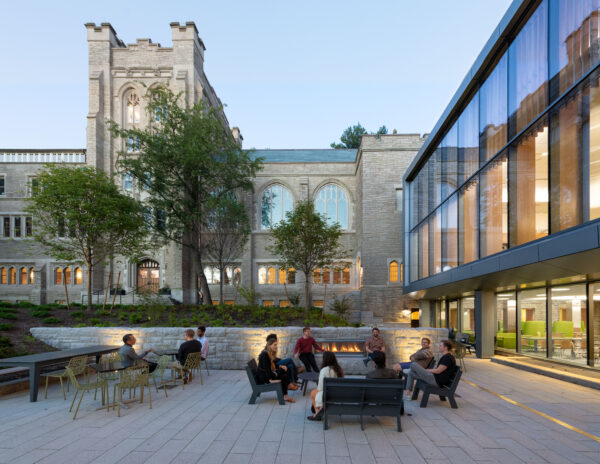
The LEED Platinum targeted design renews the building and replaces an existing addition with an expansion that welcomes new users, increases accessibility, and makes an academic, social, and spiritual home for the Divinity School.
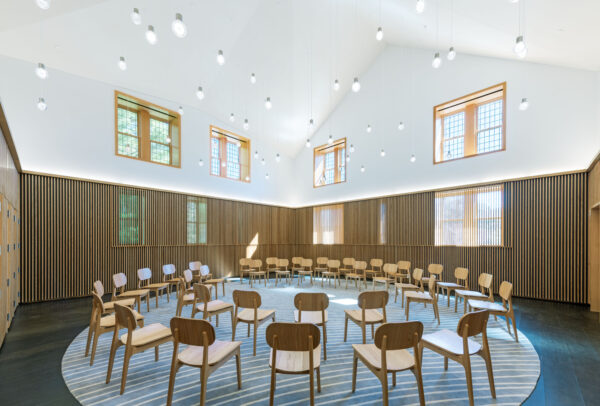
A new multi-faith prayer and worship space is created in the former library stack wing to support diverse faith traditions.
All photos: Chuck Choi
What is the greatest potential for architecture to shape a neighborhood community?
Architecture is both personal and political because it is for people. The greatest potential for public architecture is to give voice and power to people living in communities, so that they see themselves, their lives, and their values reflected in the schools, libraries, landscapes, stations, and centers in their neighborhoods.
Where do you find inspiration?
I find inspiration everywhere and whenever I see individual and collective excellence, virtuosity, and grit—whether it’s in art, literature, sports, science, or industry.
If you could redesign anything, what would it be?
The asylum application process. The Boston asylum office for U.S. Citizenship and Immigration Services granted about 11% of applications in 2021 (less than half the national average) and there were 87,400 cases pending in the Boston immigration court at the end of the same year.
If you could sum up your outlook on life in a bumper sticker, what would it say?
In everything give thanks.

